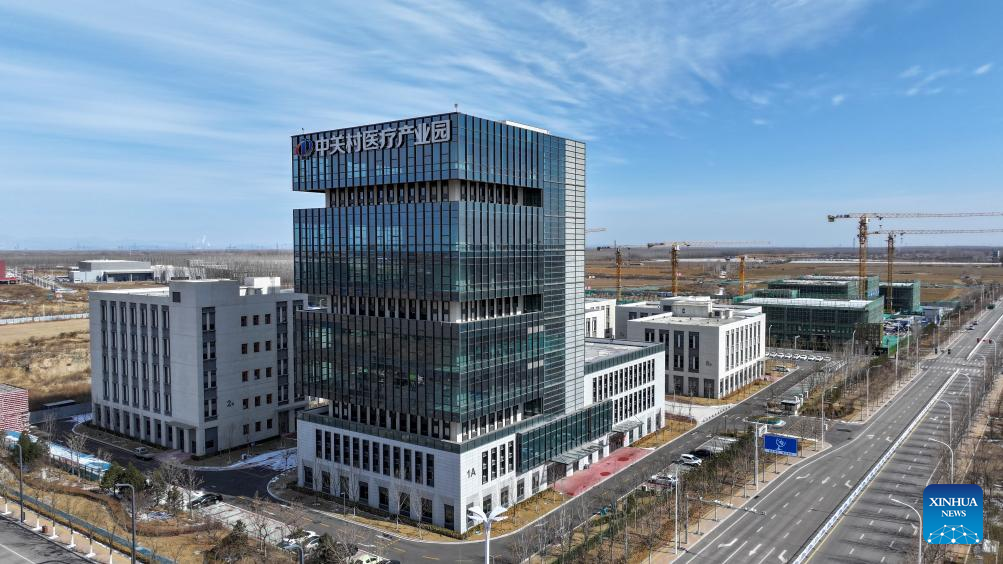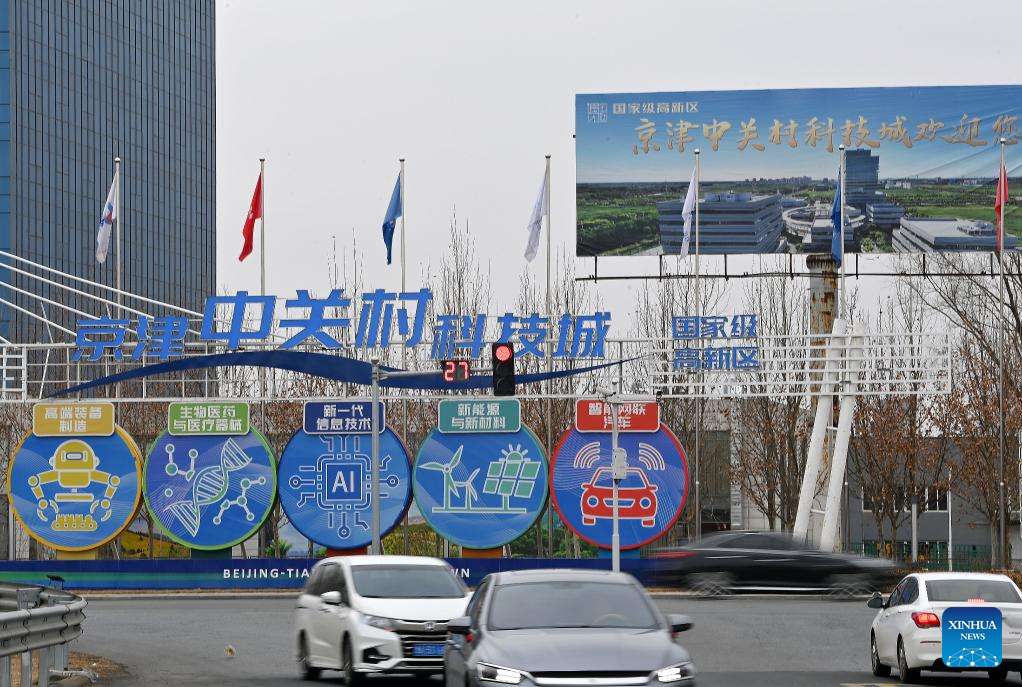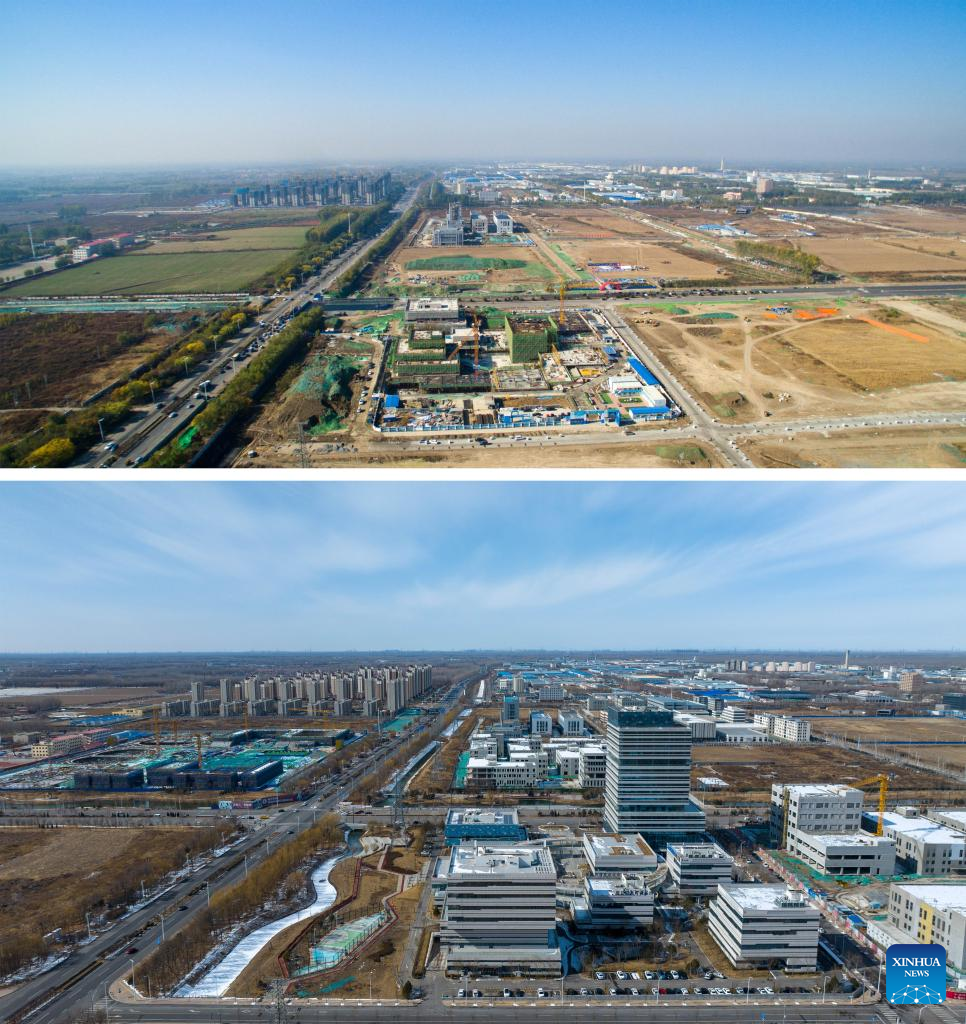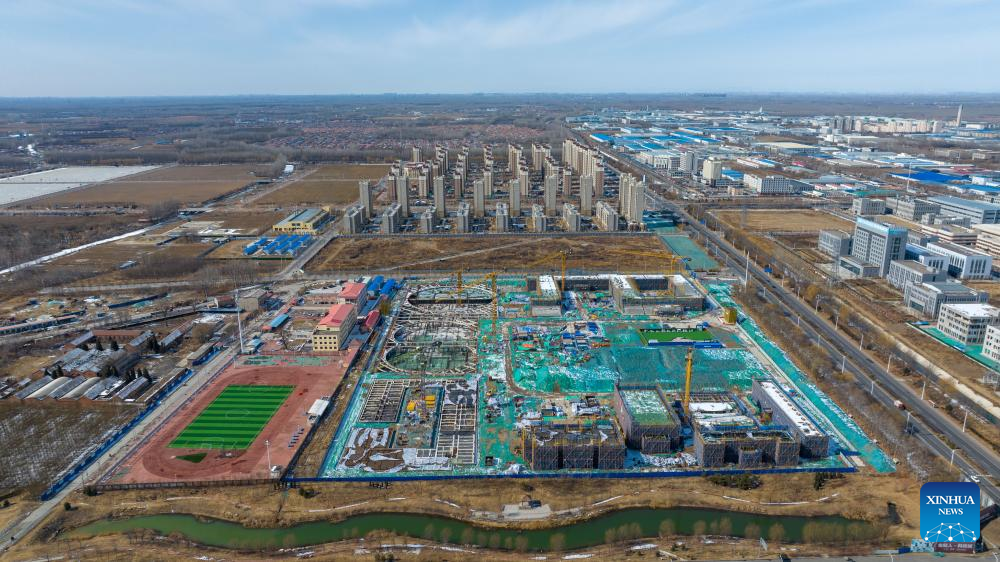
An aerial drone photo taken on Feb. 22, 2024 shows a view of the medical industrial park at the Beijing-Tianjin Zhongguancun tech town in Tianjin, north China.
At the beginning of the new year, workers of Tianze Electric Power (Tianjin) Co., Ltd., located at the Beijing-Tianjin Zhongguancun tech town, are busy on the production lines. The company is a scientific and technological enterprise that develops and produces ultra-high voltage construction and connection installation tools. Its headquarters is in Beijing. After entering Beijing-Tianjin Zhongguancun tech town in 2019, the enterprise has developed rapidly.
There are many enterprises like Tianze at the Beijing-Tianjin Zhongguancun tech town. As a key cooperation platform for Beijing and Tianjin to jointly implement the national strategy for the coordinated development of Beijing-Tianjin-Hebei region, and the first asset-heavy project of Zhongguancun outside Beijing, the Beijing-Tianjin Zhongguancun tech town with a planning area of 14.5 square kilometers has registered a total of 1,529 market players of various types, of which 502 were added in 2023. (Xinhua/Sun Fanyue)
BEIJING, Feb. 27 (Xinhua) -- The Beijing-Tianjin-Hebei region has achieved remarkable progress in high-quality development over the past decade, an official said on Tuesday.
In early 2014, China initiated a key strategy to coordinate the development of Beijing, Tianjin, and Hebei -- a regional city cluster called "Jing-Jin-Ji."
The region has made headway in building a comprehensive transport system, which has helped improve urban management and cross-regional coordinated development, Guo Lanfeng, a senior official with the National Development and Reform Commission, told a press conference.
A one to one-and-a-half-hour traffic circle linking major cities in the region has basically been formed, Guo said.
The region has also seen huge improvements in its ecological environment over the past decade. In 2023, the average concentration of fine particulate matter (PM2.5) in the region had dropped by nearly 60 percent compared with the 2014 level.
"'Beijing blue' has become a normal for the Chinese capital," Guo said, in reference to the sky over Beijing.
RIDDING BEIJING OF "URBAN ILLS"
A prominent aim of the Jing-Jin-Ji coordinated development strategy has been to move non-capital functions out of Beijing to counter various "urban ills" in the Chinese capital, such as traffic jams and pollution.
Since the implementation of the strategy, Beijing has resettled 3,000 manufacturing enterprises, and relocated or upgraded nearly 1,000 markets and logistics centers.
Several universities have begun building new campuses in Xiong'an New Area of Hebei Province, while the headquarters of some state-owned enterprises have moved from Beijing to other cities, which is conducive to the national economic layout, Guo said.
"Beijing's urban ills will be further alleviated in the future, and its capital functions will be more fully demonstrated," he said. ■

An intelligent connected bus is seen at a bus stop at the Beijing-Tianjin Zhongguancun tech town in Tianjin, north China, Feb. 22, 2024. (Xinhua/Sun Fanyue)

This photo taken on Feb. 20, 2024 shows a street view of the Beijing-Tianjin Zhongguancun tech town in Tianjin, north China. (Xinhua/Li Ran)

A staff member works at a workshop of Tianze Electric Power (Tianjin) Co., Ltd. at the Beijing-Tianjin Zhongguancun tech town in Tianjin, north China, Feb. 20, 2024. (Xinhua/Li Ran)

This combo photo shows an aerial view of the Beijing-Tianjin Zhongguancun tech town in Tianjin, north China on Dec. 31, 2018 (top, file photo), and on Feb. 22, 2024 (bottom, aerial drone photo taken by Sun Fanyue).(Xinhua)

An aerial drone photo taken on Feb. 22, 2024 shows a school under construction at the Beijing-Tianjin Zhongguancun tech town in Tianjin, north China. (Xinhua/Sun Fanyue)



